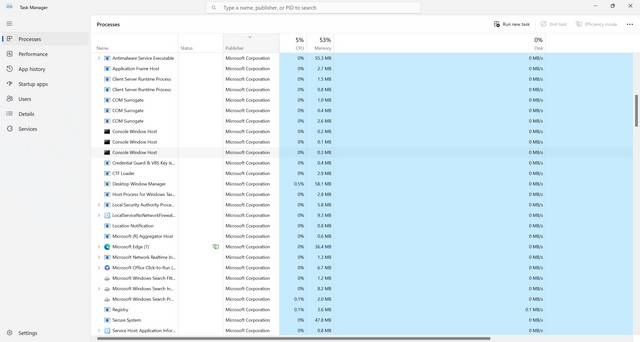When you open the Task Manager on your Windows computer, you may notice a process called “Windows Logon Application” running in the background. This process, also known as “winlogon.exe,” is an essential component of the Windows operating system. In this article, we will explore why the Windows Logon Application process is running in Task Manager and its significance in the overall functioning of your computer.

Understanding the Windows Logon Application Process
The Windows Logon Application process is responsible for managing the user logon and logoff procedures in the Windows operating system. It plays a crucial role in ensuring the security and integrity of user accounts and system resources. When you start your computer and reach the login screen, the Windows Logon Application process is initiated to handle the authentication process.
Here are some key points to understand about the Windows Logon Application process:
- Authentication: The primary function of the Windows Logon Application process is to authenticate user credentials during the login process. It verifies the username and password entered by the user and grants access to the system if the credentials are correct.
- Security Policies: The process enforces security policies defined by the system administrator. These policies include password complexity requirements, account lockout settings, and other security measures to protect user accounts.
- System Initialization: The Windows Logon Application process is responsible for initializing various system components and services after a successful login. It ensures that the necessary processes and services are started to provide a fully functional desktop environment.
- Logoff and Shutdown: When a user logs off or shuts down the computer, the Windows Logon Application process handles the necessary cleanup tasks, such as closing open applications, saving user settings, and terminating user sessions.
Why Is the Windows Logon Application Process Running in Task Manager?
Seeing the Windows Logon Application process running in Task Manager is completely normal and expected. It indicates that the process is actively managing the user logon and logoff procedures on your computer. However, if you notice multiple instances of the process running simultaneously or if it consumes an unusually high amount of system resources, it could be a sign of a potential issue.
Here are a few reasons why the Windows Logon Application process may be running in Task Manager:
- Normal System Operation: As mentioned earlier, the Windows Logon Application process is an integral part of the Windows operating system. It runs in the background to ensure a secure and smooth user login experience.
- System Updates: During system updates or software installations, the Windows Logon Application process may be temporarily active to handle any necessary changes to the system configuration.
- Malware or Virus: In some cases, malware or viruses may disguise themselves as the Windows Logon Application process to evade detection. If you suspect malware or virus activity, it is crucial to scan your computer using reliable antivirus software like Malwarebytes Free to ensure your system’s security.
- Corrupted System Files: If the Windows Logon Application process consistently consumes excessive system resources or causes system instability, it could be due to corrupted system files. Running a system file checker tool like “sfc /scannow” in the Command Prompt can help identify and repair any corrupted files.
Conclusion
The Windows Logon Application process, also known as “winlogon.exe,” is a critical component of the Windows operating system. It manages the user logon and logoff procedures, enforces security policies, and ensures the smooth functioning of your computer. Seeing the process running in Task Manager is normal, but if you notice any unusual behavior or suspect malware activity, it is essential to take appropriate action.
Remember to regularly scan your computer for viruses and malware using reputable antivirus software like Malwarebytes Free. Additionally, keeping your operating system and security software up to date can help prevent potential security risks and ensure the optimal performance of your computer.










